[javascript protected email address]
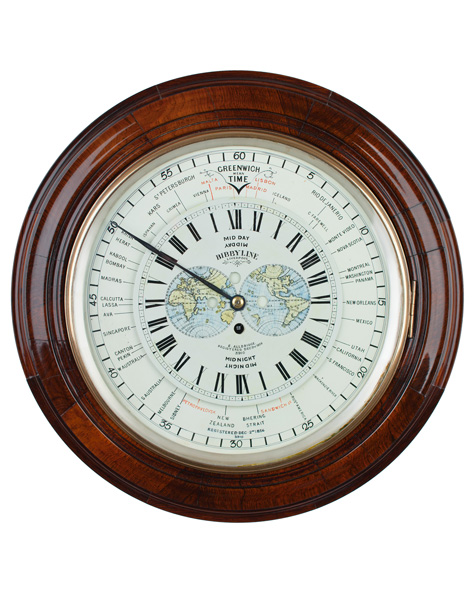
Edward Aldridge, Birmingham No. 3910

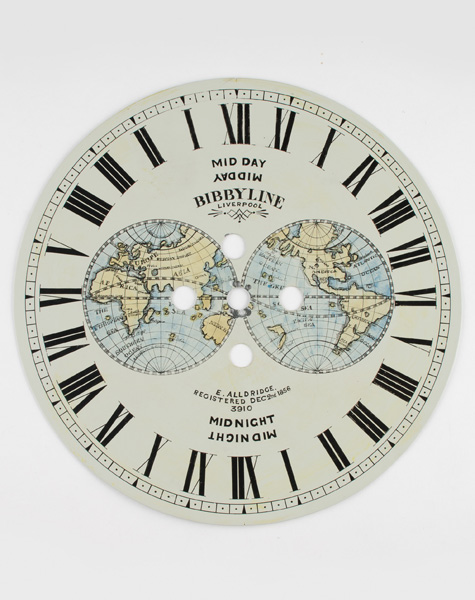
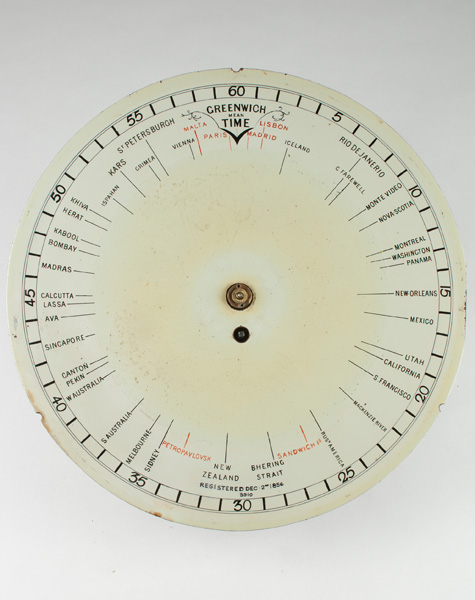
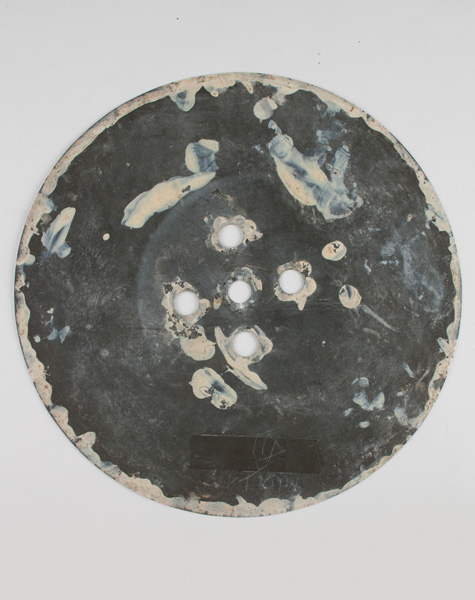
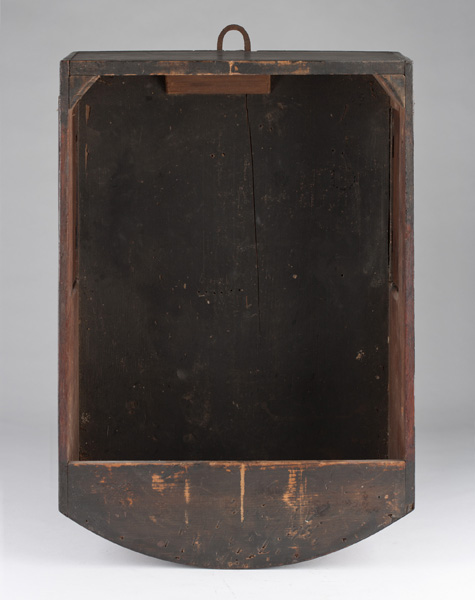
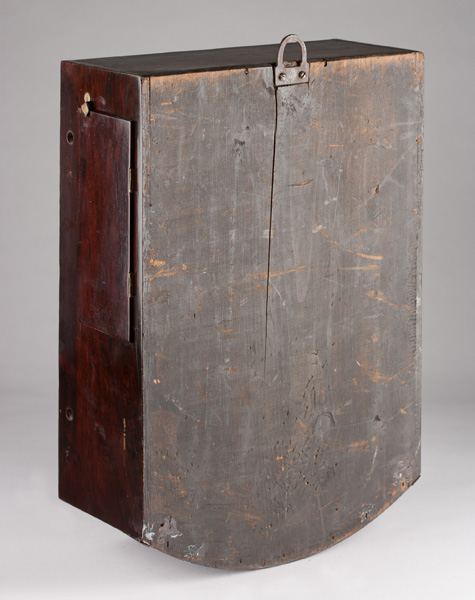
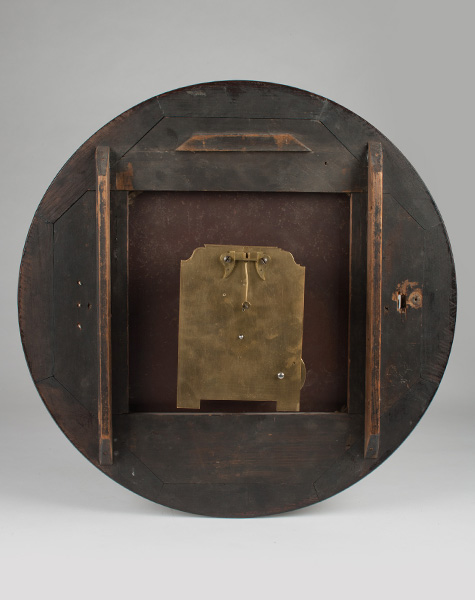
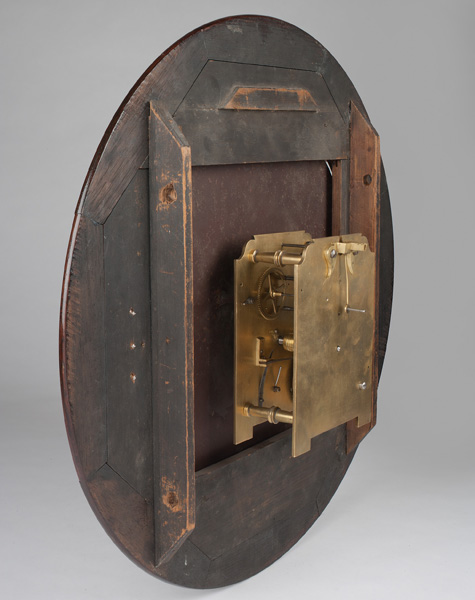
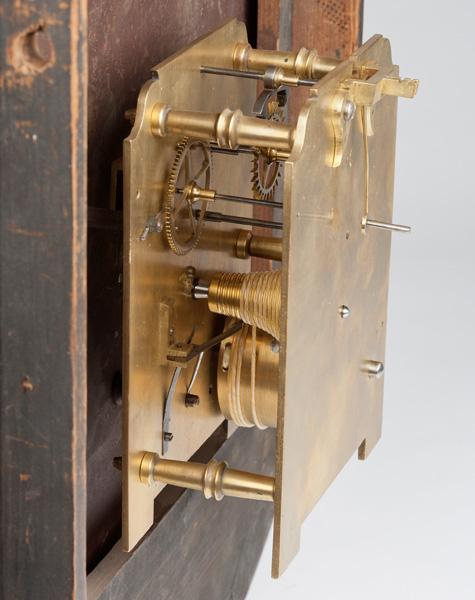
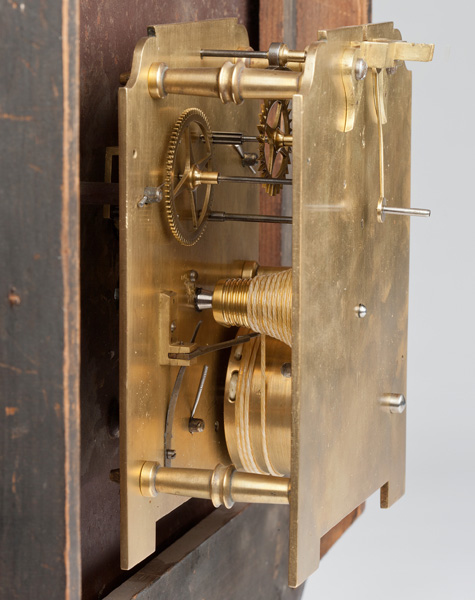
Circa 1856
Sold
Overall diameter; 20 inches
A rare rosewood world time wall timepiece made for Bibby Line, Liverpool. DIAL The 14-inch diameter painted brass dial is comprised of two sections. The outer stationery dial has a concentric outer minute ring with five minute Arabic numerals, and between the minute ring and the central rotating hour disc is a section inscribed with 44 cities around the world. The current time of each city is read against the inner rotating disc which has minute divisions at the outer edge and an inner concentric twice XII ring. The centre of the disc is painted with a terrestrial world map and it is signed between the globes E. ALDRIDGE. REGISTERED DEC 2nd 1856 3910 and beneath that is twice inscribed MIDNIGHT in reflective text. The opposing side of the disc is signed BIBBY LINE LIVERPOOL and twice inscribed MID DAY in reflective text. UK time is indicated at the top of the dial by the text GREENWICH MEAN TIME and on the opposite end of the dial above minute numeral 30 the dial is inscribed REGISTERED DEC 2nd 1856. MOVEMENT The movement has brass movement plate with shoulders to the top and cut-out bases, the plates are secured by four unusual tapered pillars with concave moulded rings. The wheel train has a spring barrel and fusee with gut lines and an anchor escapement with brass pendulum. CASE The handsome moulded rosewood bezel frames the dial, which is protected by a heavy glazed brass bezel. The rosewood frame is jointed to a softwood frame and the movement is protected in the usual manner for wall clocks by a pegged rosewood veneered pine box with latched doors to the sides and a locked door to the convex-moulded base. THE 44 WORLD TIME PLACES GREENWICH (MEAN TIME) MADRID LISBON ICELAND RIO DE JANERIO C(ape) FAREWELL (Greenland) MONTE VIDEO NOVA-SCOTIA MONTREAL WASHINGTON PANAMA NEW-ORLEANS MEXICO UTAH CALIFORNIA S. FRANCISCO MACKENZIE RIVER RUSn AMERICA (Alaska) SANDWICH IS (Hawaiian islands) BHERING STRAIT NEW ZEALAND PETROPAVSLOVSK SYDNEY MELBOURNE S AUSTRALIA W AUSTRALIA PEKIN CANTON SINGAPORE (J)AVA LASSA (Tibet) CALCUTTA MADRAS BOMBAY KABOOL HERAT KHIVA (Uzbekistan) ISPAHAN (Iran/Persia) KARS (Armenia) CRIMEA ST PETERSBURG VIENNA MALTA PARIS World timekeeping (A very brief history) For legal, commercial, and social purposes a time zone, as we know it today, is a region that has a uniform standard time. Without standard time zones, any form of joined-up communication between towns, cities and countries would be impossible. Whilst this problem of time differences was irritating, it was not until the expansion of the railways in the 19th century that uniformity in timekeeping became imperative. Because we rotate around the sun in an elliptical rather than circular manner, the reading we take from the sun in one place is different from that in another – i.e. when the current solar time in London is noon the solar time in Bristol is just after 11.50am. A fascinating relic of time, which clearly demonstrates this point, is the 19th century clock dial over the Corn Exchange in Bristol (see illustration); the red-painted hands show Greenwich Mean Time (London time) whilst the black-painted minute hand shows ‘true solar Bristol time’. Greenwich Mean Time (GMT) was established in 1675 when the Royal Observatory was built as an aid to mariners to determine longitude at sea, providing a standard reference time when each city in England kept a different local time. When well-regulated mechanical clocks became widespread in the early 19th century each city began to use local mean solar time. When trains began to keep regular time and rail lines wanted to set timetables, confusion reigned. In America the difference between New York and Boston is about two degrees or 8 minutes, whilst the difference between Sydney and Melbourne, Australia, is about 7 degrees or 28 minutes. The first to adopt standard time was the Great Western Railway (GWR) in November 1840. This quickly became known as Railway Time. On December 1st, 1847 all the railway companies in Great Britain had adopted a standard time using GMT kept by portable chronometers. Then on August 23, 1852, time signals were first transmitted by telegraph from the Royal Observatory, Greenwich. A little-known fact is that even though 98% of Great Britain''''s public clocks were using GMT by 1855, it was not made Britain''''s legal time until August 2, 1880. The first person to propose a worldwide system of time zones was Italian mathematician Quirico Filopanti in his book Miranda! published in 1858, his idea was unknown outside the pages of his book until long after his death, so it did not influence the adoption of time zones during the 19th century. He proposed 24 hourly time zones, which he called "longitudinal days", the first centered on the meridian of Rome. He also proposed a universal time to be used in astronomy and telegraphy. Scottish-born Canadian Sir Sandford Fleming proposed a worldwide system of time zones in 1879. He advocated his system at several international conferences, thus is widely credited with their invention. In 1876, his first proposal was for a global 24-hour clock, conceptually located at the center of the Earth and not linked to any surface meridian. In 1879 he specified that his universal day would begin at the anti-meridian of Greenwich (180th meridian), while conceding that hourly time zones might have some limited local use. He also proposed his system at the International Meridian Conference in October 1884, but it did not adopt his time zones because they were not within its purview. The conference did adopt a universal day of 24 hours beginning at Greenwich midnight, but specified that it "shall not interfere with the use of local or standard time where desirable". By about 1900, almost all time on Earth was in the form of standard time zones, only some of which used an hourly offset from GMT. Many applied the time at a local astronomical observatory to an entire country, without any reference to GMT. It took many decades before all time on Earth was in the form of time zones referred to some "standard offset" from GMT/UTC. Most major countries had adopted hourly time zones by 1929. Nepal was the last country to adopt a standard offset, shifting slightly to UTC+5:45 in 1986. Today, all nations use standard time zones for secular purposes, but they do not all apply the concept as originally conceived. Newfoundland, India, Iran, Afghanistan, Venezuela, Burma, Sri Lanka, the Marquesas, as well as parts of Australia use half-hour deviations from standard time, and some nations, such as Nepal, and some provinces, such as the Chatham Islands, use quarter-hour deviations. Some countries, most notably China and India, use a single time zone, even though the extent of their territory far exceeds 15° of longitude. Before 1949, China used five time zones.
